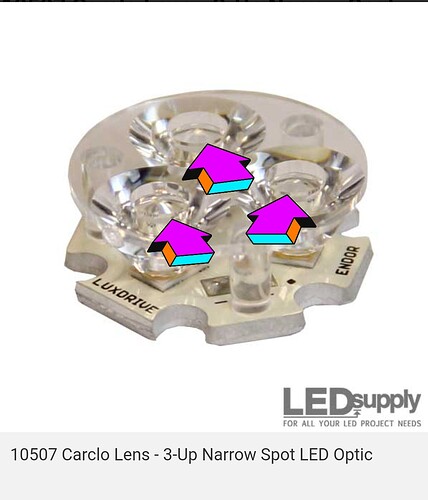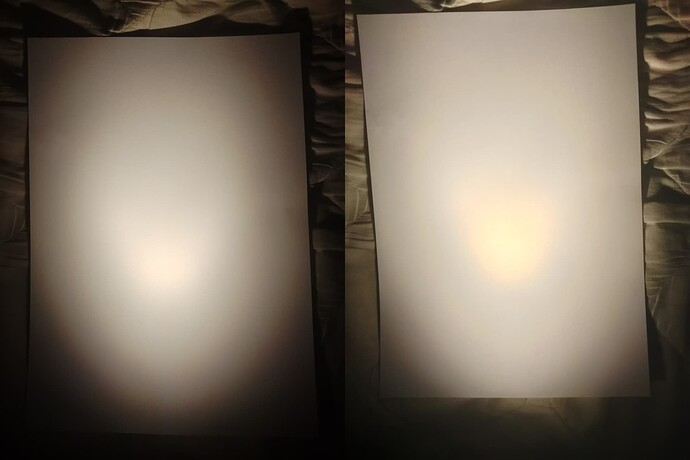For those who are confused by Carclo’s weird numbering of optics and misleading descriptions, this is to help you decide on the optic you want! [This is a crosspost for the purpose of easy access.]
Different Carclo optics produce different beam profiles due to different TIR geometry and different surface treatment. The triple and quad optics use the same individual TIRs, and matching TIRs produce the same beam profile. For those who are curious, the triple/quad correspondence goes:
- 10507 (triple) is 10621 (quad)
- 10508 (triple) is 10623 (quad)
- 10509 (triple) is 10624 (quad)
- 10511 (triple) has the same geometry as 10622 (quad), but with light frosting.
If polished to a smooth finish, the 10508/10511/10622/10623 have the same underlying optics, just with different levels of surface frosting.
So which one should you choose? That depends on what beam characteristics you want.
- For throw in domed emitters the 10507/10621 generally make the best beams, with a well-defined round hotspot (no corona) and virtually no tint shift within the hotspot. The Acebeam E70 mini pairs domed 519As with the 10507.
- For throw in domeless emitters the 10511/10622 generally make the best beams, with a well-focused hotspot and generous corona, without too much starburst artifact.
- For flood, 10508/10623 are good for making a smooth cutoff without too much tint shift.
- For rosiest hotspot tint, go with 10507/10621, everything else has varying levels of tint shift that makes the hotspot a bit yellow.
- For an elliptical (elongated) beam, the 10510 triple is an option. This might be useful for bike lights or whenever a wide strip of area lighting is needed.
- Artifacts: if the emitter has a phosphor pour that extends past the die (such as E21A and XPG3), or otherwise severe artifacting or tint non-uniformity, no clear optic can smooth it out. A frosted optic must be used to smooth out the artifacts, and throw must be forfeited. Thank you to @cannga for pointing this out.
I do not generally endorse the 10509/10624, the tint shift makes the beam from most domed LEDs unusable. Use only if the LED gives a blue hotspot and yellow spill in a reflector (i.e., has tint shift in the opposite direction as regular LEDs), such as Nichia Optisolis.
If you live in the US, the best place to get these is LEDSupply, which sells triples for $1.5 and quads $2.38. With a $3.99 shipping fee, you might as well sample all of them! EDIT: they have increased their prices for the Carclo optics. If ordering in large quantities (3 or more), MtnElectronics might have a lower total, shipping considered.







